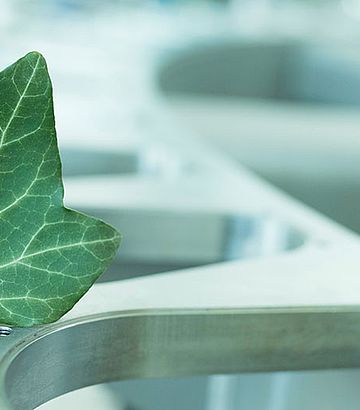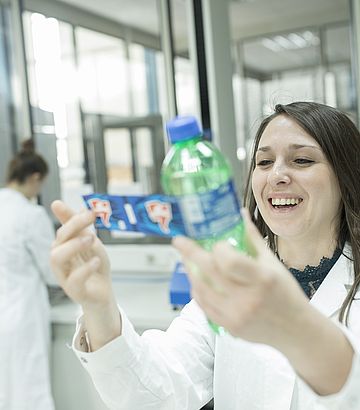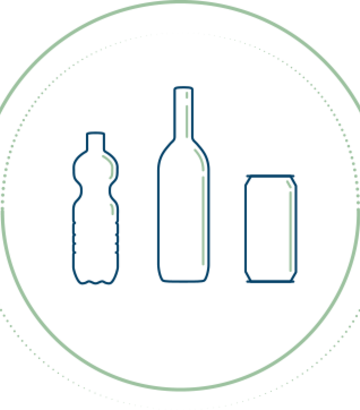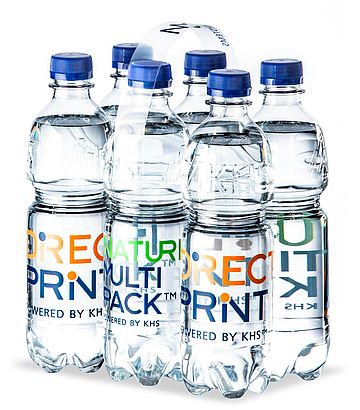PET and sustainability – a contradiction in terms?
Our natural resources are limited. In many places sustainability is thus the subject of intense discussion – for good reason.
Conscious use of raw materials starts on a small scale – and can take on vast dimensions. As a rule, the actions of every single human being have an impact on the environment. A person’s decisions have a direct effect on his or her own living environment. If many other people then support and copy these actions, this can have interregional or global consequences.
We at KHS also act according to the above basic principle. As to the question of how we can help to save on resources as a company which manufactures systems for the production and packaging of beverages and food worldwide, we focus our attention on each and every one of us. We work in an industry which requires resources. We have also been pioneers for almost 150 years and can rightly be expected to act with foresight, to actively demonstrate an awareness for the concerns of sustainability and to use our resources with sound judgement.
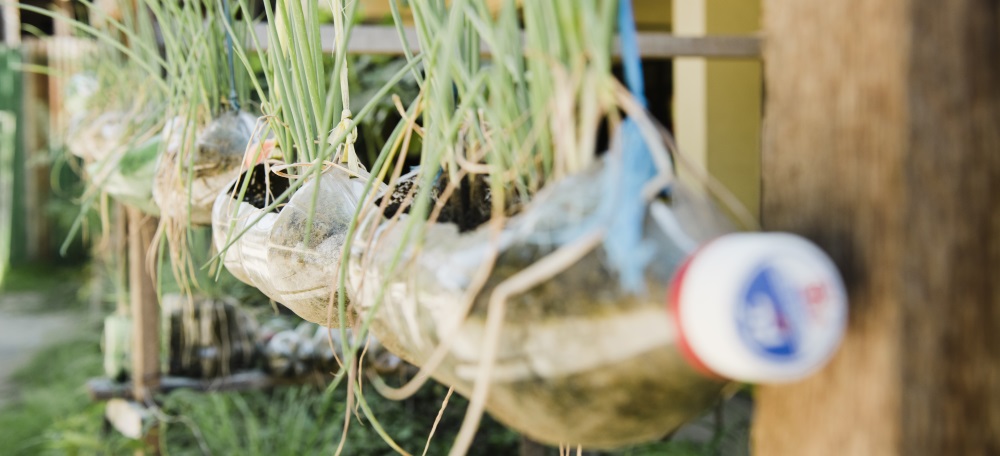
Our business is built on innovations which aim to combine the best possible efficiency and economy with high reliability in production for our customers – and to be able to offer the latter future-proof packaging systems. In order to make this possible we rely on the commitment of each and every one of our employees within our company. We explicitly support and challenge all of our personnel to make their contribution to the issues of sustainability. Working together our teams achieve what sets our company apart: the development of innovative and sustainable systems. Our customers can therefore expect to always receive holistic advice from us as they in turn are accountable to their customers – namely the end consumer, whose consciousness regarding sustainable consumption continues to grow. More than ever before the many aspects of sustainability thus play an increasingly important role in long-term decisions to invest. Ultimately they are the main drivers behind developments and innovations.
We explicitly support and challenge all of our personnel to make their contribution to the issues of sustainability.
One of the first decisions our customers in the food and beverage industries must make before opting for a machine or line is to choose the container their product is to be filled into. While the most important criteria for our customers include product safety, line availability and life cycle costs, consumers are increasingly calling for individual consumer sizes and safe handling. Many types of container already satisfy these needs. Beverage cans are becoming lighter and lighter, for example, and are supplied in many different sizes. The trend in glass bottles is also towards the lighter receptacle, with these also being geared towards the demands of the consumer. Like PET bottles, both types of container provide a high degree of product safety. PET scores with a number of further advantages, however: no other material provides as many opportunities for versatile design and cutting down on container weight. The bottles are also unbreakable and, like glass bottles, can be reclosed. Companies in the beverage industry especially are thus increasingly opting for PET container systems worldwide.
The benefits of this container type are obvious: it is extremely flexible as it can be used in many different ways. However, primarily with its low weight the PET bottle has the cutting edge over other types of container, particularly during shipping with its very low carbon footprint. At the same time we know that in the manufacture of PET preforms, which are later used to make PET bottles, finite raw materials are used, such as crude oil. Another challenge facing both our customers and us as a company is that in many countries of the world extensive recycling concepts are lacking. Many of our customers thus have to devise and apply individual recycling models in these regions – for the demand for PET products continues to rise. We are tackling this challenge within our means in a collaborative spirit. How can PET containers be even more environmentally friendly in their makeup and manufacture in the future, for instance? Which processes need to be optimized? What can be done to help our customers to find new packaging systems?
As a diversified systems supplier to the beverage and food industries we forcefully address these questions as we are a decisive part of this process. We are conscious of the fact that together we bear responsibility for and with our clients and would like to specifically set a good example in this area.
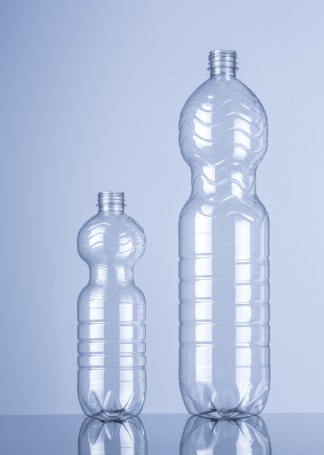
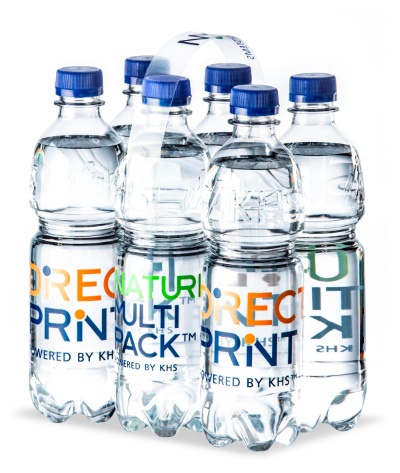
Never satisfied with our achievements
Our machines have been optimized to process preforms which are up to 100% recycable or preforms with a certain percentage of biopolymer. We have already readied numerous innovative systems for market – from the lightest 0.5-liter PET bottle for carbonated beverages with a screw cap, which weighs just 9.9 g, to our world-first Nature MultiPackTM, which holds PET bottles together with nothing more than a few dots of adhesive and a carrying handle, thus doing away with the need for the usual packaging film.
And thanks to FreshSafe PET we offer optimum product protection through an ultra-thin glass coating on the inside of the PET bottles. In this way the product's shelf life is extended four- to sevenfold, enabling a wider range of distribution and 100% recycling.
However, we must not and do not want to stop here. The significance of our PET systems will continue to increase in the future as the global demand for beverages bottled safely and flexibly grows. In Africa and Asia alone the population will practically double by 2100. The subsequent demand for clean drinking water can be chiefly met by two possible solutions: by digging local wells or providing clean drinking water in safe packaging.
Sustainable supply of drinking water thanks to PET
In regions with a weak infrastructure PET systems will thus increasingly provide sustainable service in the future, as thanks to the material’s unbreakability the product is protected during transportation and in the bottle itself until the last drop has been drunk. With the water safely packaged, this container system can also protect consumers from the spread of disease. Last but not least, a PET bottle can also be reclosed. The consumer can drink the beverage as he or she requires, thus actively preventing precious water from being wasted.
In order to also be able to ensure this supply in regions where local bottling is not possible or which have a poor infrastructure, a system of transportation which is as sustainable as possible is required. The carbon footprint plays a major role in this. The lighter the bottles are, for example, the more efficient and thus resource-saving are production and transportation. This is just one of the many issues which have to be taken into account, however. We also concentrate on continuously optimizing methods of production with regards to saving materials and consumption media in an attempt to achieve a permanently small carbon footprint. We achieve this through special bottle designs, for instance, which require a lower blowing pressure. Furthermore, we use the compressed air several times over in a two-stage blow molding process.
All told, our aim is to consider the many chances and challenges associated with PET in equal measure and to master these in the long term. To this end, we rely on our committed employees at the special competence centers we have set up and on cooperation with various associations and research institutions. We want to find solutions together with and for our customers – just as they would expect from us as a pioneer. In this way, PET and sustainability need not be a contradiction in terms.
